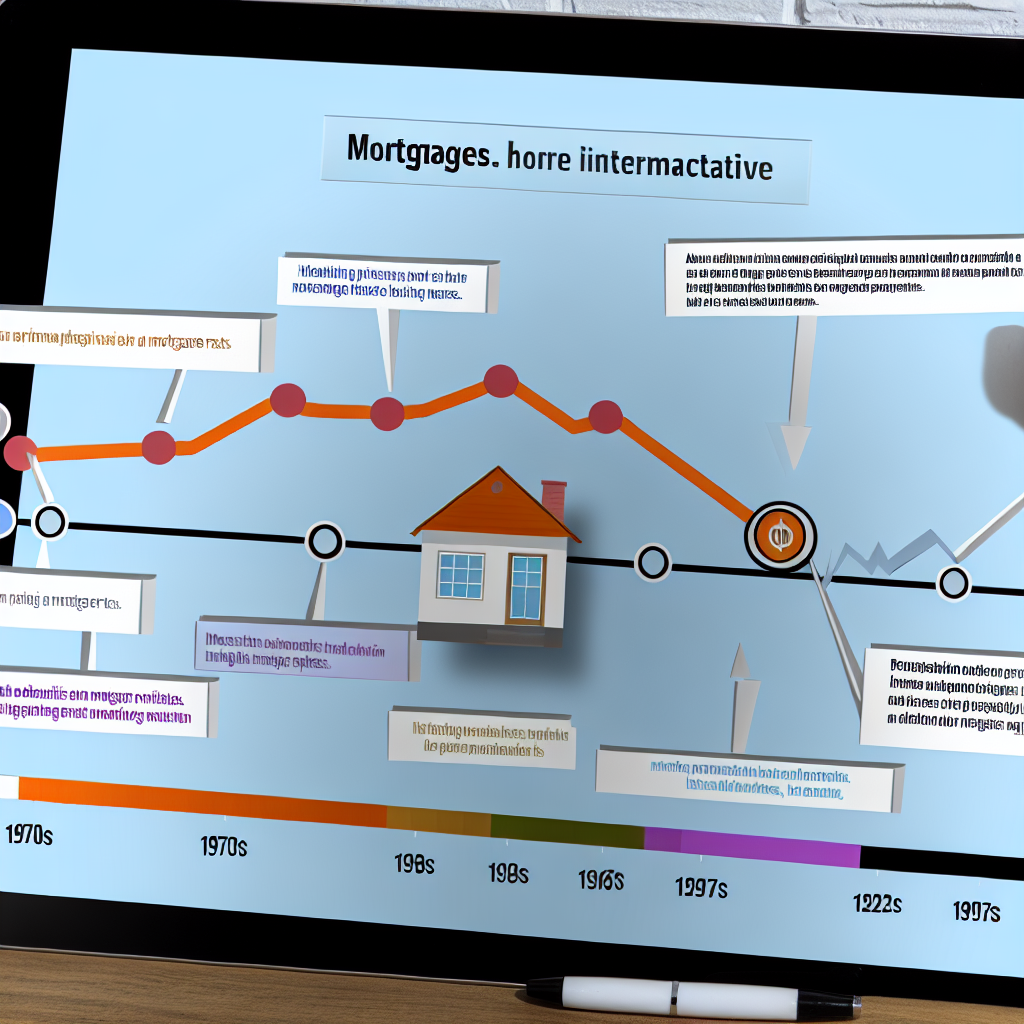The Role of Mortgage in Real Estate: A Historical Perspective

Real estate is a significant sector of the economy, and the availability of mortgage financing has played a crucial role in its growth and development over the past 50 years. In this article, we will explore the historical significance of mortgage in real estate, examining its impact on homeownership rates, housing affordability, and the overall economy.
The Rise of Mortgage Financing
Before delving into the role of mortgage in real estate, it is essential to understand the historical context of its rise. In the early 20th century, homeownership was primarily reserved for the wealthy, as most people lacked the financial means to purchase a home outright. However, the introduction of mortgage financing revolutionized the real estate market.
During the mid-20th century, the United States witnessed a surge in mortgage lending, primarily driven by the establishment of government-sponsored enterprises (GSEs) such as Fannie Mae and Freddie Mac. These institutions provided liquidity to the mortgage market by purchasing mortgages from lenders, thereby enabling them to issue new loans to prospective homebuyers.
As a result, homeownership rates in the United States soared. According to the U.S. Census Bureau, the homeownership rate increased from 62.9% in 1960 to a peak of 69.2% in 2004. This upward trend can be attributed to the accessibility of mortgage financing, which allowed individuals from diverse socioeconomic backgrounds to fulfill their dream of owning a home.
Housing Affordability and Mortgage
One of the key benefits of mortgage financing is its ability to enhance housing affordability. By spreading the cost of a home purchase over an extended period, mortgages make homeownership more attainable for individuals who may not have sufficient savings to buy a property outright.
For example, consider a young couple looking to purchase their first home. Without access to mortgage financing, they would need to save a substantial amount of money for a down payment and pay the full purchase price upfront. However, with a mortgage, they can make a smaller down payment and finance the remaining amount over several years.
Mortgage financing also allows homeowners to leverage their investment. As property values appreciate over time, homeowners can build equity in their homes. This equity can be used to access additional financing for various purposes, such as home improvements or funding other investments.
Furthermore, mortgage interest payments may be tax-deductible in some jurisdictions, providing additional financial benefits to homeowners. This tax advantage incentivizes homeownership and further contributes to housing affordability.
The Impact on the Economy
The availability of mortgage financing has far-reaching implications for the overall economy. The real estate sector, fueled by mortgage lending, has a significant multiplier effect on economic activity. Let’s explore some of the ways in which mortgage impacts the economy:
- Job Creation: The real estate industry, including construction, sales, and related services, generates employment opportunities. As more individuals become homeowners, the demand for housing-related services increases, leading to job creation and economic growth.
- Consumer Spending: Mortgage payments are a significant portion of household expenses. By spreading the cost of homeownership over time, mortgage financing allows homeowners to allocate a larger portion of their income towards other goods and services, stimulating consumer spending.
- Financial Sector Stability: Mortgage lending is a vital component of the financial sector. Banks and other financial institutions rely on mortgage loans as a source of revenue. The stability of the financial sector is closely tied to the performance of the real estate market, making mortgage financing crucial for overall economic stability.
Case Study: The Subprime Mortgage Crisis
While mortgage financing has played a significant role in the growth of the real estate sector, it is essential to acknowledge the challenges and risks associated with it. The subprime mortgage crisis of 2008 serves as a cautionary tale.
During the early 2000s, lax lending standards and the securitization of subprime mortgages led to a housing bubble in the United States. Many individuals with poor credit histories were granted mortgages they could not afford, leading to a surge in foreclosures when the housing market collapsed.
This crisis had severe repercussions on the real estate market and the broader economy. Foreclosures soared, property values plummeted, and financial institutions faced significant losses. The subprime mortgage crisis highlighted the importance of responsible lending practices and the need for effective regulation in the mortgage industry.
Conclusion
Mortgage financing has played a pivotal role in the real estate sector over the past 50 years. It has facilitated homeownership, enhanced housing affordability, and stimulated economic growth. However, the subprime mortgage crisis serves as a reminder of the risks associated with irresponsible lending practices.
As we move forward, it is crucial to strike a balance between expanding access to mortgage financing and ensuring responsible lending standards. By doing so, we can continue to harness the power of mortgage financing to drive the real estate sector and contribute to a thriving economy.









